International Hair Authority
A QUARTER OF AMERICAN WOMEN DON’T GO TO HAIR SALONS

According to a survey among 2,000 women of different ethnicities conducted by ‘All Things Hair, a quarter (24%) of US women don’t go to hair salons. African American women go the most - 5.9% of Black women go to a salon once a week (double the consumer average of 2.9%). Women with 4c hair spend the most money, while women with straight hair spend the least.
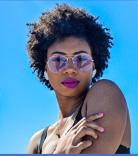
Hair Loss Solution: Cut the Sweetened Drinks


Mental & Physical Health Resources Now Available to PBA Members
The Professional Beauty Association (PBA) has redesigned its membership offerings to further support beauty professionals. New benefits include 24/7 virtual counseling, access to affordable health insurance, dental, vision, prescription plans, childcare, homecare, and pet insurance options. Work-related stress is prevalent in the beauty industry, and mental and physical health resources are lacking in many areas.

Banking On the Future
Medical professionals specializing in hair loss now have another tool at their disposal – follicle cell preservation a service offered through GetHairMD™’s partnership with Acorn Biolabs. The process involves minimally invasive extraction of small amounts of hair from the scalp which is then cryogenically frozen, allowing individuals suffering from hair loss at any stage of life to preserve their own cells in case new regenerative medicine options become available.
New research has linked sugary drinks, such as soda and juice, to hair loss in men. The study, conducted by Tsinghua University in Beijing, found that men who had at least one sweetened beverage per day were 30% more likely to experience hair loss. For those who drank over a gallon of sugary drinks per week, this risk jumped to 42%. The study suggests that consuming too much sugar can cause insulin resistance, which may harm hair and overall health over time. The findings could spell bad news for those who can’t resist the allure of sugary drinks.


Hair Straighteners May Double the Risk of Uterine Cancer!

Law firm starts class action
A recent study conducted by the National Institutes of Health (NIH) found that women who regularly used hair straighteners are twice as likely to develop uterine cancer. The reason? many straighteners contain harmful chemicals like Parabens, Bispheonol A, Formaldehydge and various toxic metals that can cause endochrine-interrupting or carcinogenic effects. Trowel Law wants to help people who have used hair straighteners and developed uterine, ovarian, or endometrial cancer get compensation and invites victims to join a class action lawsuit.

Volume 24 No 85 Spring 2023 The Profesional Publication of Hair Replacement & Restoration
TM LIFESTYLE RESEARCH EDUCATION MARKETING Summer’s Coming! Protect your hair Understandig Hair A deep dive Unlocking Finasteride Topical or oral? Black-Owned Beauty Brands Pg. 04 Pg. 12 Pg. 30 Pg. 23
Hair Management, Not Replacement
Looking over the articles in this issue, I see that the theme is largely health and safety. Safety, not only in physical terms and hygiene, but also protecting hair and the scalp against future damage. What was once called the “hair replacement” industry is fast becoming the “hair protection” industry. We are living at a time where we have an aging population that refuses to grow old and a youth market that wants to stay that way! This requires the hair loss industry to change gears. Unlike other parts of the world, the US healthcare industry has historically waited for an event to occur before fixing it. This is true of medicine in general and the hair loss market. However, Covid has taught us the importance of prevention and this re-orientation is now being seen in the hair care marketplace. Increasingly, people are looking to preserve what they have, and are actively exploring lifestyle, dietary, and even relaxation therapies that might prevent future hair loss.
Time to Socialize Again
Earlier this year, we attended two major events, the Bronner Bros. show in New Orleans, and a few weeks later, the Barbers Convention in Connecticut. On both occasions, we went prepared to share research and provide education. However, participants at both events did not come to learn more about their profession or hone their skills. Nor did they come searching for free samples or show discounts. Instead, they were seeking social connections and companionship. The Bronner Brothers event was above all a celebration of ethnicity and creativity. It was a cultural, not a trade event. And the same was largely true of the barbers’ convention. People were hungry to reconnect with their peers. This makes me think that it may be time to restart those hair distributor conferences that gave companies a platform to assert their different personalities and bond with their clients. The industry is hungry to connect again - and this just might be the time to do it.
Updating Communication Tools
At the same time, we should now re-examine our communication tools. Professionals and the public at large now have access to instant information about hair care and hair loss solutions through Google searches and by surfing
the web. That means short-term information tools are now redundant. However, there remains a substantial need for people to accumulate and store knowledge. That is where International Hair Authority has such an important role to play. Hair Authority goes behind the scenes to introduce readers to researchers, educators, and news makers. It gathers and packages important information in a way that people can easily access and share. Many salon owners use Hair Authority to educate their staff and keep them current. With over 20 years of reporting history behind us, people can dip into past issues to identify industry trends, make new friends, or discover new products.
To summarize, the structure, or should I say, architecture, of the hair loss industry is rearranging itself. There are now three distinct components:

1. Socializing, which is best achieved through communal, events and activities.
2. Breaking news, which is best achieved through Google search and web surfing.

3. Information organization and storing - which is where we come in. Hair Authority has a more important role than ever.
In response to this evolving landscape, we have restructured our circulation policy. This was accelerated by the Covid pandemic when most of our readers asked us to send them PDF copies of the magazine so that they could read them safely at home while their business was closed. When business returned to normal, they did not want to give up the convenience of digital copies and we were asked to maintain this. This has allowed us to greatly extend our circulation beyond past subscribers to include men and women everywhere with hair loss issues. As a result, our circulation has expanded by several thousand readers, and we are now reaching deep into the consumer need space. Of course, this is good news for our advertisers, but more importantly, it strengthens the hair industry when a respected and independent information tool presents trustworthy solutions to all types of hair loss and introduces readers to professionals with strong business ethics and professional skills.
By working together, we can continue to grow the industry on a platform of ethical and sound business practices.
Chris Webb,
2 Hair Authority Spring 2023
Editorial



















 By Marta Teixeira
By Marta Teixeira
Introduction
There are a range of significant symptoms related to hair and scalp disorders that can lead to a change in the physical appearance and psychological distress in patients. The NHS (UK National Health Service) should provide these patients with a dermatological examination (including using a trichoscope on the consultation), arrange any necessary investigations to achieve a diagnosis (such as blood tests or a scalp biopsy) and advise patients on the appropriate treatment.
This is a range of dermatology that is not as approached on the NHS, meaning that most patients will see themselves in the need to go to a hair loss specialist privately. Hair loss consultations are not a regulated area, meaning that anyone can call themselves a hair loss specialist or Trichologist. Many General Practitioners (GP) are not referring hair loss patients to a dermatologist and most hair loss treatments are also not available on the NHS (1). This article will provide an overview of the science of hair and hair care to dermatology nurses.
Structure of hair
Hair is only found in mammals, meaning that the growth cycle of hair follicles is synchronized regionally so that waves of hair loss and replacement go through the entire body. In the human body, each individual hair follicle has its own independent cycle. (2) Although hair nowadays is seen as an inherited look, it also has very important roles, such as protecting the scalp from the UV light, protect the scalp from trauma,
Understanding Hair AS A SKIN APPENDAGE

influence body temperature and have sensory functions. (3)
Each hair is made up by two separate structures: the hair shaft, which is the visible part outside the skin and the follicle, which is located underneath the surface of the skin. (3)
All hairs are keratised non-living structures and are formed in the hair follicle, a living follicle that enlarges at the base and forms the hair bulb, which is distributed all over the entire surface of the skin, except on the palms and soles. (4)
Each hair shaft is composed of a cortex, surrounding cuticle cells and a medulla that is only found on thicker hairs. It is this feature that plays an important role in determining the physical and mechanical properties of the hair, such as strength, texture and colour. (4)
The follicle is located underneath the surface of the skin and makes the hair grow. This structure is composed of the inner root sheath and the outer root sheath. (4) The outer root sheath is the place where the stem cells are located and are responsible for differentiating cells such as melanocytes and keratinocytes. Most authors defend that these stem cells are located within the bulge area, between the arrector pili muscle and the ductal opening of the sebaceous gland. (4)
The inner root sheath consists of the Henle layer, the Huxley layer and the cuticle layer that helps to fix the
4 Hair Authority Spring 2023
hair that is growing onto the hair follicle. The cuticle is the most known hair shaft structure for cosmetic reasons, since it’s the main feature that if not cared for, it will show an odd appearance on the hair. Cuticles are like shingles on a roof, overlapping cells that protect the hair shaft from its hair follicle. (4)

(6)
The hair bulb is the bottom region with a small mass of cells that produces hair. This structure extends into the dermal layer of the skin and surrounds the dermal papilla. The papilla is composed of connective tissue and is associated with nerve fibers and a loop of the capillaries that supplies nutrients. This is the main region important for the hair growth process, that will determine characteristics like size and colour of the hair shaft.

The dermal papilla lies beneath the hair follicle, which makes it the main communication link between the hair follicle, the hair, and the rest of the body. This consists of a complex mix of growth factors, stem cell factors, keratinocyte growth factor and bone morphogenetic protein. (4)
The dermal papilla is trapped by small arterioles that originate from the subcutaneous fat. These capillaries nourish the hair follicle by delivering oxygen and nutrients. Just like the skin, hair is created from rapid division and differentiation of stem cells that turn into the keratinized cells. The hair shaft that grows on the surface of the skin is just composed of keratin. (4)
Types of hair
There are 3 types of hair based on their characteristics: terminal, vellus and lanugo. Hair that is darker, visible to the human eye, coarse, thick hair that is found on the scalp, underarms and pubic area is called terminal hair. In men, terminal hair is also found on the face and chest and this type of hair on these areas are related to androgen-dependent sites under the influence of testosterone.
Areas of the body that look hairless, but with a closer look it can be seen shorter, finer, lightly pigmented that lack the medulla layer and are mainly found on the face, arms and stomach are called vellus hair. Lanugo hair is the type of name given for the fine, non-pigmented hair that lacks the medulla layer and covers the fetus. These hairs usually have some centimeters long and by the first weeks of life, lanugo hair is replaced by vellus hair on the body and by terminal hair on the scalp. (8)
The only parts of the external surface of the body that don’t have any hairs are the palms and soles of the hands and feet, lips, labia minora and glans penis.
Purpose of hair
Different evolutionary theories claim that humans were able to maintain the hair on the scalp because the head is directly exposed to the sun and to retain heat at night, since the brain is very metabolically active and is able to produce heat, and hair on the scalp is able to maintain warmth. (9)
As a physical blocker, hair does help shield the scalp from some of the sun’s ultraviolet (UV) rays. Studies show that hair provides a barrier against both UVB and UVA radiation which is significantly increased with respect to the hair density, thickness and the presence of melanin. When a person is standing, the scalp is perpendicular to the sun’s rays and therefore receives high doses of radiation, explaining the relatively high incidence of skin cancers in this area. (10)
The arrector pili muscle is controlled by the autonomic nervous system which makes the hair shaft elevate and trap air to maintain the body heat in cold conditions.
Abrasions are not that common on the scalp because of the presence of thick hair, which tends to prevent or blur the patterned effect of blunt force injuries. It can be difficult to detect a bruise on the scalp because of hair. (11) We must remember as well that the hairy skin of
Hair Authority Spring 2023 5
mammals represents one of the largest sensory surfaces, responsible for the ability to sense angular acceleration of the head (rotational movements), linear acceleration (translational movements), and postural orientation with respect to gravity. (12)
In human beings, specialized hairs such as eye lashes and hairs inside the nostrils and external ears afford some protection from the environment. Eyebrows prevent sweat from getting into the eyes. On the inner ears of human cadavers, sound entering the cochlea generates traveling waves along the length of the basilar membrane.
Scalp hairs may assist in stabilizing the temperature of the brain. Hairs can also excrete toxic substances like arsenic, and are thus of use in forensic medicines. The hair follicle is an important model system for studying basic biological problems. Repigmentation in vitiligo patches often starts around hair follicles. So, even though hairs have no longer survival value, they do serve useful functions and are not completely vestigial. (13)
Variations in terminal hair color
Color contributes to the overall visual appearance of hair. Follicular pigmentation is responsible for numerous factors such as: hair cycle-dependent changes, body distribution, racial and gender differences, variable hormone responsiveness, genetic defects and age-associated change.
The hair bulb is the only site of pigment production for the hair shaft and melanocytes are distributed just below the pre-cortical keratinocytes, from where melanin can be transferred to the hair shaft cortex. Melanocytes are located beyond the reach of direct stimulation by UV radiation – the principle regulator of melanocytes in the epidermis. (14)
Melanosome structure correlates with the main type of melanin produced:
Dark brown/black hair bulb melanocytes contain the largest number of melanosomes with a highly orwwwwwwwdered fibrillar matrix. These melanosomes are termed true or eu-melanosomes and their melanin termed true or eu-melanin. (14)
Brown hair bulb melanocytes also contain eumelanosomes, but these are smaller than in black hair. (14)
Blond hair follicle bulbs produce weak melanized melanosomes, with so little eumelanin that their melanosomal matrix is visible as is not hidden by melanin.
Red hair bulb melanocytes produce the pheo-melanosome, with a disordered internal structure. Unlike the fibrillar core of the eumelanosome, the pheomelanosome contains a vesicular matrix with red/yellow melanin deposited irregularly in a random fashion. Eumelanogenic and pheomelanogenic melanosomes often co-exist in the same normal human melanocytes. (14)
Hair color also shows striking age-related changes; the hair color in children usually darkens with advancing age. (14). Scalp hair bulb melanocytes are at their most active during youth, when the follicular melanin unit is just a few hair growth cycles old and also when they are most responsive to the full post-puberty hormonal stimulus. There is experimental evidence to suggest that the melanocyte stem cell reservoir in adult hair follicles may be limited. (14)
The onset and progression of hair greying correlates closely with chronological ageing and occurs to varying degrees in all individuals, regardless of gender or race, being genetically controlled and inheritable. Scalp hair greying first appears usually at the temples, and spreads to the vertex and then the remainder of the scalp affecting the occiput last. Beard and body hair is usually affected later. Greying happens because of a marked reduction in melanogenically active melanocytes in the hair bulb of anagen hair follicles. (14)
Texture and shape
Hair fibers show a wide diversity across and within all human populations, although they typically have the same basic structure, the three-dimensional shape of the entire fiber varies considerably depending on ethnicity and geography, going from very straight hair with no rotational turn about the long axis, to the tightly sprung coils of hair. (15) Genetic factors seem to play a major role in determining hair texture - straight, wavy, or curly as well as the thickness of individual strands of hair. Studies suggest that different genes influence hair texture and thickness in people of different ethnic backgrounds. (15)
The dominating ancient hominid scalp hair form was curly because of the ability of the curved shape to raise the fiber root away from the skin, thereby delivering both UV protection and scalp cooling. With migration from hot climates into colder areas, evolutionary adaptation is thought to have caused changes in hair shape and color. (16)
Some authors mention that changes throughout life in the intrinsic hair form may be related to a health condition or drug effect. Woolly hair may point to certain autosomal recessive hair disorders, and changes in hair shape have been observed from treatment of certain conditions, such as
Science + Aesthetics
PROVEN NON-SURGICAL SOLUTIONS
FOR THINNING HAIR
Science meets aesthetics to give your patients something new: a complete system that targets thinning hair inside and out. While clinically proven ViviscalTM PRO Supplements promote existing hair growth in 6 months, XFusionTM by ToppikTM Keratin Hair Fibers conceal thinning hair instantly. Together, they o er the perfect complement to your hair loss treatments and procedures, giving patients the short-term and long-term solutions that they need to fight the e ects of hair loss and boost their confidence.*

XFusionTM by ToppikTM
Keratin Hair Fibers

• Instant Transformation

• Decades of Loyal Users
• Confidence Booster
ViviscalTM PRO Supplements


• Over 25 Years & 10 Published Trials
• Clinically Proven
Customer Ser vice (800) VIVISC ALPROFE S SIONA XFUSION HAIR .COM Ma t er ials o f Chur ch & D w i g ht , C o In c , t h e maker s o f V iv is c al™ an d X Fusi o n™ by To pp ik™ C op y r i g h t © 2 019 Chur ch & D w i g h t C o , In c A ll r i g h t s r e s er ve d * These statements have not been evaluated by the Food and Drug Administration. This product is not intended to diagnose, treat, cure or prevent any disease.
chemotherapy, the so called “chemo curls”. (16)
Early studies on follicle morphology described a direct correlation between follicle shape and race. It has also been demonstrated that curly fibers, emerging angularly from the scalp, are generated by curved follicles (that have a retrocurvature at the bulb). Straight hair, on the other hand, emerges from collinear follicles that are embedded at approximately right angles with the scalp. Besides having a curved follicle contour, the bulb and other curly fibers also exhibit an asymmetry in shape and cellular distribution, as opposed to symmetry and homogeneous cellular dispersal in straight hair fibers. (16)
Breaking and reformation of disulfide bonds on the hair are processes that are closely associated with changes of fiber curliness (such as straightening hair or chemical treatments) so this means that these bonds are believed to help on hair curvature. (16)
Normal Hair growth: Phases of hair growth
The growth of the hair follicle is cyclical. Stages of rapid growth and elongation of the hair shaft alternate with periods of quiescence and regression driven by apoptotic signals. This cycle can be divided into three phases: anagen (growth), catagen (transition), and telogen (rest). (4)
Anagen growth is the active phase where the hair follicle works to produce the hair fiber, this means that the follicle starts proliferating hair progenitor cells and also begins the process of differentiation. Under normal conditions, 85% of hairs on an adult human scalp are in the anagen phase, and this can last up to 2 to 6 years. Hairs in the eyebrows and eyelashes only need a couple of months to grow.
To signal the beginning of the anagen phase, the dermal papilla signals the multipotent epithelial stem cells in the bulge. Once these stem cells are stimulated, the inferior segment of the hair follicle can now grow downwards, forming a bulb around the dermal papilla. Now, the dermal papilla can signal matrix cells in the bulb to proliferate, differentiate, and grow upwards, forming a new hair. (4, 6)
The catagen phase starts when the anagen phase finishes. This phase can last just a few weeks and the hair follicle undergoes apoptosis-driven regression and loses about one-sixth of its standard diameter. Usually about 1% of hairs are in the catagen phase on a normal adult hair scalp. During this phase, cell division in the matrix ceases, and the inferior segment of the hair follicle begins to regress. Eventually, the inferior segment of the follicle no longer exists, and the dermal papilla has moved upwards to contact the bulge once again. During
this process, a club hair is formed with a white, hard node on the end. (4, 6)
The last phase is called the Telogen phase, which means that this is the resting phase of the hair cycle. In this phase the hair follicle is dormant and the growth of a new hair shaft doesn’t occur. This phase can last from a few weeks for eyelashes to about 3 to 4 months in scalp hair. About 10% to 15% of all hairs in the body are in this resting phase at any given time and can remain in this state for a variable amount of time, depending on its location. (4)
The bulge activation theory posits that growth factors produced in the dermal papilla stimulate bulge stem cells to proliferate and modulate growth-phase transitions. Because these cells are transient amplifying cells, they only can go through a limited number of mitoses, thereby setting the duration of anagen and onset of catagen phases. (6)
At birth, all hairs begin in the anagen phase; the human scalp contains over 100,000 hairs. At any one point in time, most hairs (85% to 95%) are commonly found in the anagen phase and these hairs can grow approximately 1 cm per month. Meanwhile, hair loss is continuous, meaning that losing about 100 hairs per day on average is normal. (6)
Signs and symptoms of poor skin/hair health. Indicators of comorbidity or underlying medical problems. How stress or environmental factors affects hair health.
Hair has many areas of clinical significance which include diseases of hair loss, excess, alterations due to nutritional deficiencies, infectious causes, and effects of drug reactions. The unwanted loss of hair, known as alopecia, is a widespread condition affecting both sexes, occurring in numerous patterns, and classified into non-scarring and scarring (cicatricial) subtypes. (4) The most common non-scarring type of alopecia is androgenetic or “pattern” hair loss which develops due to a combination of genetic predisposition. This condition is also known as female or male pattern hair loss and is caused by androgens in genetically susceptible women and men. Androgenetic alopecia means that there is a genetic predisposition to reduced hair volume. It is characterized by progressive hair loss, especially of scalp hair, and has distinctive patterns of loss in women versus men, but in both genders the central scalp is most severely affected. It often begins around puberty, though its prevalence in this
8 Hair Authority Spring 2023
younger population is not known, and its incidence is reported to be 50% in Caucasian men and 19% in Caucasian women. The inheritance pattern is polygenic and is known to effect self-esteem and the individual’s quality of life. (18)
In this condition, hair follicles on the scalp are genetically predisposed to be sensitive to normal levels of circulating androgens, causing hair follicles to gradually shrink and produce strands of a finer diameter, also known as hair miniaturization. (4)
Approved pharmacologic treatment options are limited, but there are numerous nonprescription products claimed to be effective in restoring hair in androgenetic alopecia with no relevant scientific data. (18)
Alopecia areata is nonscarring patchy hair loss, usually on the scalp, which often has the characteristic “exclamation point” hairs that are short and broken and appear to be floating exclamation marks. It may be patchy, involve the entire scalp (alopecia totalis) or the whole body (alopecia universalis). (4) Patients may recover spontaneously, but the disorder can follow a course of recurrent relapses or result in persistent hair loss. Alopecia areata can cause great psychological distress, and the most important aspect of management is counseling the patient about the unpredictable nature, chronicity and course of the condition as well as the available effective treatments, with details of their side effects. (17)
Scarring alopecia can arise from cutaneous manifestations of lupus, auto immune or a bacterial inflammatory condition known as dissecting folliculitis. These patterns of alopecia exhibit patches of shiny, bare scarring tissue on the scalp, or, bare skin and result in permanent hair loss in the affected areas. (4)
Telogen Effluvium is when hair roots are pushed into the telogen resting phase. This usually occurs after some stress, poor diet, hypo or hyperthyroidism, anemia, some specific types of pharmaceutical drugs, illness, post-pregnancy and cessation of contraceptive pill and can be acute or chronic. (4)
Traction alopecia is caused by hair under strain and is seen in people who wear their hair and tight braids and ponytails, cornrows and hair extensions. (4)
Hair loss can also be due to an infection, like tinea capitis, a fungal infection that results in a patch of
hair loss on the scalp. (4)
Psycho-social influences/fashion/ trends/issues
Hair plays an important role in determining self-image, social perceptions, and psychosocial functioning in both men and women. Several authors confirm that the experience of hair loss is psychologically damaging, causing intense emotional suffering, and often leading to personal, social, and work-related problems. People with severe hair loss are more likely to experience psychological distress than those with mild hair loss. The loss of hair changes a person’s looks, particularly when the eyelashes and eyebrows are affected. (20) The relationship between hair loss and psychosocial consequences may be complicated by hair loss that can arise from a stressful life event, which leads to further distress, anxiety, and depression. Women who experience high levels of stress are 11 times more likely to experience hair loss than those who do not report high stress levels. (20)
Compared with the general population, people with hair loss have an increased prevalence of psychiatric disorders, including a major depressive episode, an anxiety disorder, social phobia, or a paranoid disorder. Anxiety and depression caused by hair loss can be treated using cognitive behavioral therapy and support groups, as well as by medication such as antidepressants. Psychological treatment is important for people with hair loss, but the best method is not certain and will differ from patient to patient. Research has predominantly been focused on the general issues of coping with hair loss rather than on specific psychological treatment strategies. (20)
The most important effect is a loss of self-confidence. This is enhanced by an insecure or ambivalent attachment pattern. Two psychiatric syndromes that are most mentioned is most studies is: the body dysmorphic syndrome (very slight or imaginary defect in appearance) and trichotillomania. Androgenetic alopecia leads to an important suffering in women mostly, since men deal with this condition by shaving their hair. Alopecia induced by cancer chemotherapy has been reported to cause changes in self-concept and body image, since that sometimes hair does not return to the previous state after regrowth of hair for a majority of patients. Alopecia areata has an important psychiatric comorbidity: mostly anxiety and depression. (21)
Self-consciousness about body image is consistently portrayed and commented upon in the media. The role of the media in emphasizing an expectation of a full head of hair should be explored, as well as how it can be used to educate society about hair loss and tolerance of people’s physical differences. (20)
Hair Authority Spring 2023 9
Hair care: for normal scalp and hair conditions, dry scalp conditions and oily scalp conditions. ‘Handy Hints’ for hair and scalp care
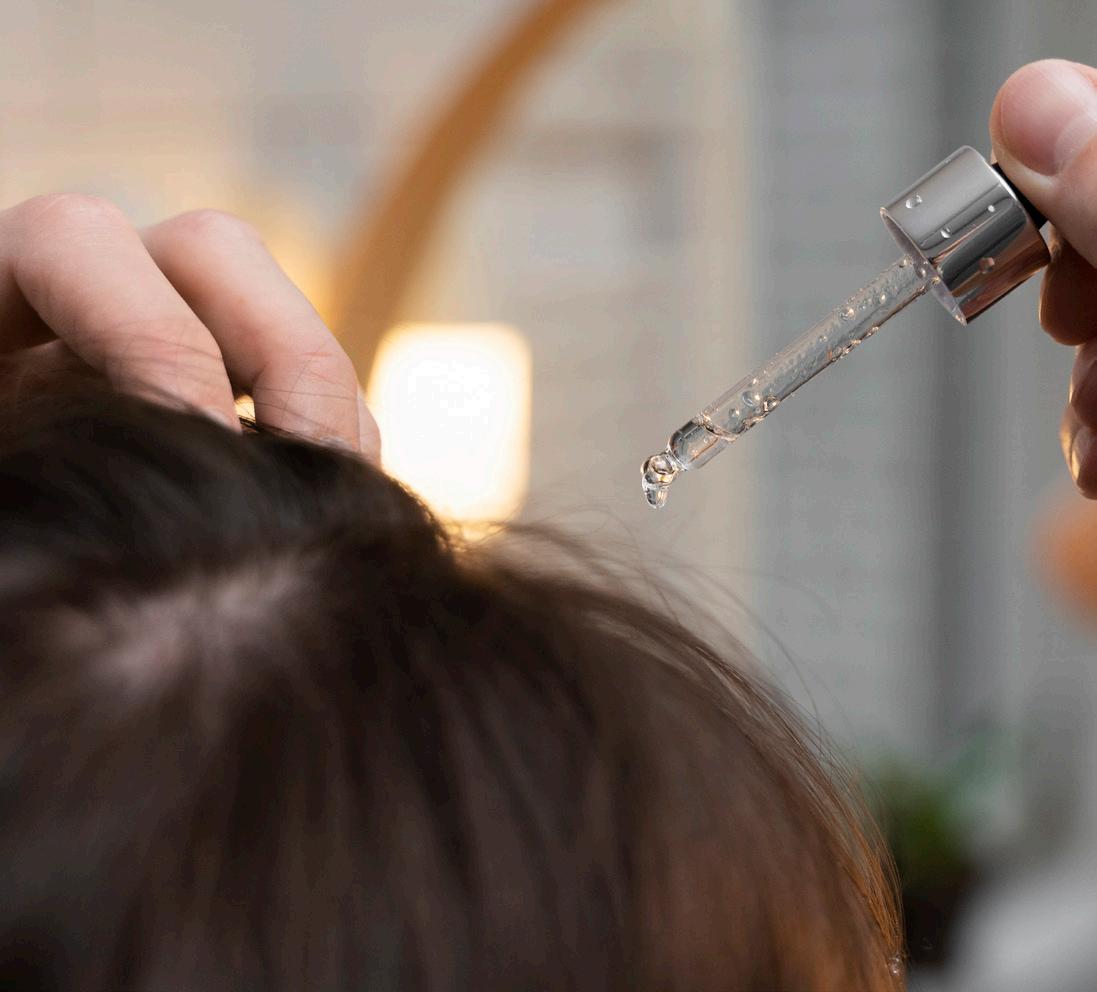
Every woman and man needs advice on hair care and cosmetics, but the medical literature is scarce in this field. Excessive or repeated chemical treatments, grooming habits, and environmental exposure produce changes in hair texture and if extreme can result in hair breakage, tangling and frizz. If the cuticle is removed, the exposure of the cortex may lead to hair fiber fracture, so the use of hair cosmetics may restore hair cuticle damage temporarily and prevent hair breakage by
entering the fiber, the conditioner may reach the cuticle surface or the inner part of the cortex. (22)
Deep conditioners most of the times contain more concentrated ingredients or just more viscosity. Some polymers are reported to build-up the hair and to resist shampooing from hair. Leave in creams, gel or mousse are designed to be applied on wet or dry hair and left without rinsing. They are aqueous based or alcohol-water solvent systems and these products act by enhancing inter-fiber forces and by providing a detangling effect to facilitate combing and style retention. (22)
The small angle of the waves of very curly hair makes it more susceptible to damage, making curly hair more difficult to comb without breakage. Wavy, curly and afro hair are more prone to have oily scalp but dryer hair fiber, while fine straight hair can transport sebum very well throughout the hair fiber. Abrasion and friction are important factors that cause hair damage by protein loss, so the use of conditioners with oils and silicones are important to minimize the rubbing and friction of the cuticle cells for chemical treated hair and after the use of anti-dandruff shampoos. (22)
reducing friction. (22)
Shampoos are typically composed of 10–30 ingredients that are grouped into: cleansing agents, conditioning agents and special care ingredients, designated to treat specific problems, such as dandruff and greasy hair. Although considered as safe products, very rarely, shampoos can cause contact dermatitis. (22)
The use of anti-dandruff shampoos can make hair more difficult to comb. High cleansing shampoos remove surface oils and increase chargeability by depositing small amounts of anionic surfactants onto the hair. Less frizz is achievable by lubricating the fiber surface and decreasing static charge with conditioners, deep conditioners and leave in products. (22) Conditioners are used to decrease friction, detangle the hair, minimize frizz and improve combability. Conditioners act by neutralizing the electrical negative charge of the hair fiber from the shampoo by adding positive charges and by lubricating the cuticle to ease the process of detangling. They contain anti-static and lubricating substances that are divided into 5 main groups: polymers, oils, waxes, hydrolyzed amino acids and cationic molecules. Depending on the capacity of
A good hair care routine should mean the entire scalp has been rubbed with the shampoo from the front to the back, and small amounts of shampoo had been applied on each region of the head under the hair. Applying shampoo on the top of the head will increase hair friction and cause tangling. After rinsing, the conditioner and/or deep conditioner should be applied on the hair avoiding the scalp. The conditioner has to be completely rinsed out.
Wet hair is more fragile so it is recommended that every step should be very gentle; the shampooing, towel drying and brushing/combing. If the hair is wavy or curly, leave-in products should be used while hair is wet to increase texture and shine while drying. Grooming with a hair dryer or flat iron requires a heat protector that will spread the heat along the hair fiber surface avoiding water boiling and the development of hair. (22)
Although using a hair dryer causes more surface damage than natural drying, some scientific articles concluded that using a hair dryer at a distance of 15 cm with continuous motion causes less damage than drying hair naturally, since it’s less time exposed to the swelling caused by water. (22)
10 Hair Authority Spring 2023
Marta Teixeira
Adult Nursing Degree, BSc (Hons), Postgraduate Certificate Anesthetic Course, Trichology Certificate Course by the International Association of Trichologists, MSc in Dermatology in Clinical Practice, Non-Medical Prescribing V300 Course
References
1 - nhs.uk. 2021. Hair loss. [online] Available at: <https://www.nhs.uk/conditions/hair-loss/> [Accessed 14 December 2021].
2 - Plikus, M.V. and Chuong, C.-M. (2008). Complex Hair Cycle Domain Patterns and Regenerative Hair Waves in Living Rodents. Journal of Investigative Dermatology, 128(5), pp.1071–1080.
3 - Hoover, E., Alhajj, M. and Flores, J., 2021. Physiology, Hair. [online] Ncbi.nlm.nih.gov. Available at: <https://www.ncbi.nlm.nih.gov/books/ NBK499948/> [Accessed 14 December 2021].
4 - Antonella Tosti and Bianca Maria Piraccini (2006). Diagnosis and treatment of hair disorders : an evidence based atlas. London: Taylor & Francis.
5 - Style beyond image. (n.d.). Structure Of The Hair Shaft. [online] Available at: https://stylebeyondimage. weebly.com/hairology/structure-of-the-hair-shaft [Accessed 14 Dec. 2021].
6 - Martel, J.L. and Badri, T. (2019). Anatomy, Hair Follicle. [online] Nih.gov. Available at: https://www. ncbi.nlm.nih.gov/books/NBK470321/. [Accessed 14 Dec. 2021].
7 - Erdoğan, B. (2017). Anatomy and Physiology of Hair. [online] www.intechopen.com. IntechOpen. Available at: https://www.intechopen.com/chapters/53880. [Accessed 14 December 2021].
8 - Saleh, D. and Cook, C. (2019). Hypertrichosis. [online] Nih.gov. Available at: https://www.ncbi.nlm. nih.gov/books/NBK534854/. [Accessed 14 December 2021].
9 - May 2021, T.S.-L.S.C. 24 (n.d.). Why do we grow more hair on our heads than on our bodies? [online] livescience.com. Available at: https://www. livescience.com/why-hair-on-head.html. [Accessed 14 December 2021].
10 - de Gálvez, M.V., Aguilera, J., Bernabó, J.-L., Sánchez-Roldán, C. and Herrera-Ceballos, E. (2015). Human Hair as a Natural Sun Protection Agent: A Quantitative Study. Photochemistry and Photobiol-
ogy, [online] 91(4), pp.966–970. Available at: https:// pubmed.ncbi.nlm.nih.gov/25682789/ [Accessed 14 Dec. 2021].
11 - Vij, K. (2011). Textbook of Forensic Medicine and Toxicology : Principles and Practice, 5/e. [online] Google Books. Elsevier India. Available at: https://books. google.es/books/about/Textbook_of_Forensic_Medicine_and_Toxico.html?id=pOd2EVL5xAwC&redir_esc=y [Accessed 14 Dec. 2021].
12 - McPherson, D.R. (2018). Sensory Hair Cells: An Introduction to Structure and Physiology. Integrative and Comparative Biology, 58(2), pp.282–300. [Accessed 14 Dec. 2021].
13 - Yesudian, P. (2011). Human Hair – An Evolutionary Relic? International Journal of Trichology, [online] 3(2), p.69. Available at: https://www.ncbi.nlm.nih.gov/ pmc/articles/PMC3250022/. [Accessed 14 Dec. 2021].
14 - Tobin, D.J. (2008). Human hair pigmentation biological aspects. International Journal of Cosmetic Science, 30(4), pp.233–257.
15 - Westgate, G.E., Ginger, R.S. and Green, M.R. (2017). The biology and genetics of curly hair. Experimental Dermatology, 26(6), pp.483–490.

16 - Cloete, E., Khumalo, N.P. and Ngoepe, M.N. (2019). The what, why and how of curly hair: a review. Proceedings of the Royal Society A: Mathematical, Physical and Engineering Sciences, 475(2231), p.20190516.
17 - Garg, S. and Messenger, A.G. (2009). Alopecia Areata: Evidence-Based Treatments. Seminars in Cutaneous Medicine and Surgery, 28(1), pp.15–18.18
- Varothai, S. and Bergfeld, W.F. (2014). Androgenetic Alopecia: An Evidence-Based Treatment Update. American Journal of Clinical Dermatology, [online] 15(3), pp.217–230. Available at: https://link.springer.com/ article/10.1007%2Fs40257-014-0077-5. [Accessed 14 Dec. 2021].
19 - Alfonso, M., Richter-Appelt, H., Tosti, A., Viera, M.S. and García, M. (2005). The psychosocial impact of hair loss among men: a multinational European study. Current Medical Research and Opinion, 21(11), pp.1829–1836.
20 - dermnetnz.org. (n.d.). Psychological effects of hair loss | DermNet NZ. [online] Available at: https:// dermnetnz.org/topics/psychological-effects-of-hair-loss. [Accessed 15 Dec. 2021].
21 - Poot, F. (2004). [Psychological consequences of chronic hair diseases]. Revue Medicale De Bruxelles, [online] 25(4), pp.A286-288. Available at: https:// pubmed.ncbi.nlm.nih.gov/15516058/ [Accessed 15 Dec. 2021].22 - Gavazzoni Dias, M.F. (2015). Hair cosmetics: An overview. International Journal of Trichol-
Hair Authority Spring 2023 11 IHA
Summer’s Coming: Tips to Avoid UV Damage

Protecting Hair from Solar Radiation
The sun can cause serious damage to our hair. Research shows that UV rays are responsible for up to 80% of the visible signs of ageing in hair, including greying and split ends. Prolonged exposure to the sun can also lead to dryness, brittleness, discoloration, frizziness, and breakage.

The Effects of UV Rays on Color-Treated Hair
Sun exposure can be particularly damaging to hair that has been tinted or colored. The UV rays from the sun can cause fading of color-treated hair and accelerate the oxidation process, leading to weakened cuticles and keratin bonds. This makes them more prone to breaking, split ends, and frizziness.
A study published in the International Journal of Trichology found that “blond hair is more susceptible to sun damage than dark brown or black hair due to its lighter pigmentation.” Additionally, the study reported that “fine and straight hair is more prone to sun damage than curly and wavy hair because it does not have the same kind of protective barrier against UV rays as thicker strands.”
About Oxidation
The UV rays from the sun are responsible for creating free radicals that attack our hair, resulting in oxidation. Oxidation is a reaction that occurs when oxygen interacts with other compounds and can lead to serious damage to our hair. It can also cause color changes, as well as weakening of the hair’s cuticle and keratin bonds.
Preventative Measures Against Sun Damage
To prevent this from happening, it is important to use sunscreen specifically designed for the scalp while outside. Make sure to wear protective hats or scarves to keep the sun from coming into direct contact with your hair. You should also use hair care products that contain UV filters and antioxidants, as these can help protect the hair’s color and shield it from further damage.
Blond and Fine Hair Are More Susceptible to Sun Damage
Fortunately, there are steps you can take to protect your hair from the sun’s harmful rays. Invest in a hat or scarf to cover up your head and shield some of the light from your hair. You should also apply a leave-in conditioner with a protection factor of at least 30SPF.
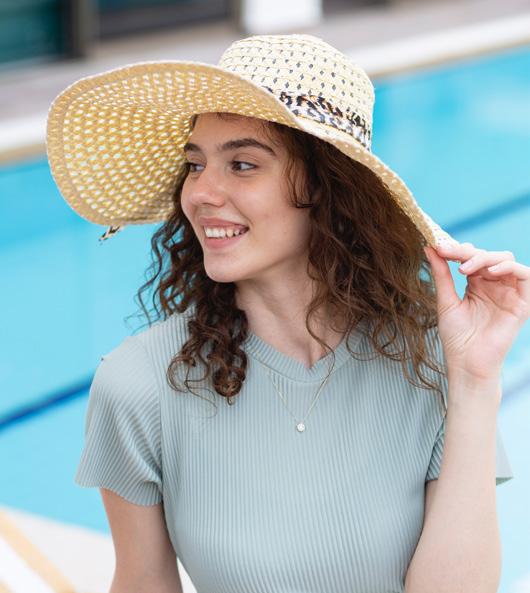
12 Hair Authority Spring 2023
THE INTERNATIONAL HAIR AUTHORITY
The Hair Authority’s mission is to provide hairmanagement professionals from all disciplines with accurate information that will help them provide superior service to their clients and patients. It is a full-color tabloid, published quarterly and distributed worldwide.
EDITOR IN CHIEF
Christopher Webb cwebb@hairauthority.com
Treating your hair with deep conditioning masks is also a great way to prevent dryness and damage. Trimming split ends regularly will help keep them from worsening due to exposure to UV rays, while choosing lightweight hairstyles that don’t put a strain on your scalp or hair follicles can also help.
Chlorine Is Not Your Friend
Research shows that chlorine is especially damaging to the hair. Chlorine strips away the body’s natural oils, which can lead to dryness and breakage. Additionally, it can react with other chemicals in haircare products and irritate the scalp, leading to itching and flaking. Over time, this can build up and lead to long-term damage.
To prevent this from happening, wear a cap while swimming in chlorinated pools and use specialized haircare products made specifically for swimmers. Additionally, make sure to wash your hair with cold water after taking a dip to prevent the build-up of chlorine on the strands.

Be Proactive
Remember that exposure to UV rays is cumulative, so it’s important to take preventive measures even when the sun isn’t shining. Invest in some quality hair care products and protect your locks from sun damage!

CREATIVE DIRECTOR
Vikas Verma vicky1verma@gmail.com
CONTRIBUTING EDITORS
Celestine Gitau, IAT celestinegitau@gmail.com
LEGAL NOTICE
Hans Diks European Editor
The views expressed in The International Hair Authority are those of the individual author or contributor and not those of The International Hair Authority, its editors or staff. The Authority’s contents reflect the opinions of the authors and are not analyzed, peer-reviewed or otherwise investigated before publication. All authors and contributors are asked to disclose any interests they have of a commercial nature. The International Hair Authority makes no attempt to validate the sufficiency of such disclosures and makes no warranty, guarantee or other representation, expressed or implied with respect to the accuracy or sufficiency of any information provided. The publication of an advertisement does not constitute on the part of the International Hair Authority a guarantee or endorsement of the quality or value of the representations or claims made by the advertiser. The International Hair Authority accepts no responsibility for unsolicited materials.
All articles and letters become the property of the International Hair Authority and may be edited for clarity, presentations and space. By allowing your articles, interviews and personal commentary to be used in The International Hair Authority, you are giving the publication permission to use these materials in its pages, websites and other information materials. Advertisers are required to sign a formal advertising agreement indicating that they are not violating any trademarks or other intellectual properties. Full details are outlined in The International Hair Authority Media Kit.
COPYRIGHT
The material published in The International Hair Authority is copyrighted and may not be utilized in any form without the written consent of the editor.
THE INTERNATIONAL HAIR AUTHORITY
30659 Lily Pond Ln., Murrieta, CA 92563
Email: info@hairauthority.com
Tel: 626-709-6397
Hair Authority Spring 2023 13
IHA
TM
Are you Keeping Your Customers Safe?
Uncovering the importance of disinfection in hair salonsa must-read for customers and salon owners

In the wake of the COVID-19 pandemic, disinfection and hygiene have taken center stage as the most crucial factors in keeping ourselves and our environments safe. Amidst all this, hair salons - places where people come to relax, rejuvenate, and improve their appearance - have taken on a new level of importance. Not only do they have to follow strict hygiene protocols to prevent the spread of the virus, but they also have to ensure that customers feel safe and secure while availing their services.
The Need for Disinfection in Hair Salons
This is where disinfection comes in. A recent study found that 67% of hair salon tools tested positive for bacteria. Another study found that 50% of hair salon chairs tested positive for bacteria. These statistics highlight the potential risks of cross-contamination and emphasize the need for maintaining high sanitization standards.
The Environmental Protection Agency (EPA) has a list of
disinfectants that are effective against COVID-19, and salons should refer to these guidelines to select the right disinfectant for their premises. Additionally, they can refer to their state’s guidelines for disinfection protocols in hair salons. Customers should be vigilant and inquire about these protocols before availing any services.
The biggest hygiene problems in hair salons range from exposure to chemicals to skin and respiratory disorders to slippery floors from spilled hair products, splashed water, dirt, and un-swept hair clippings. Proper disinfection practices can prevent the spread of diseases and infections. Tools must be properly sanitized after each use with every client, else it can lead to the spread of diseases and infections.
Potential Risks of Cross-Contamination
Some bacterial species found in hair salons, such as Staphylococci, Streptococci, and Pseudomonas aeruginosa, are of
14 Hair Authority Spring 2023
major concern due to their association with several common diseases, respiratory problems, and chronic illnesses. The risks are higher if disinfection protocols are not followed strictly.
Ways to prevent the spread of bacteria:
1. Clean and disinfect tools and surfaces regularly.
2. Use disposable tools when possible.
3. Wash your hands frequently and encourage your clients to do the same.
4. Use gloves when handling chemicals or performing services that could cause cuts or abrasions.
5. Keep your salon well-ventilated to reduce the risk of airborne infections.
Reducing the Risk of Exposure to COVID-19
1. Instruct sick workers to stay home.
2. Have a qualified ventilation professional evaluate the building’s HVAC system.
3. Encourage workers and customers to wear masks.
4. Practice social distancing while visiting salons.

5. Wash your hands frequently and encourage your clients to do the same.
6. Use disposable tools when possible.
7. Clean and disinfect tools and surfaces regularly.
The risk of infection has not gone away. According to OSHA, hair salon workers are at an increased risk of exposure to COVID-19 due to their close contact with clients. As of May 2021, the latest data available, only 63% of hair salon workers have received at least one dose of the COVID-19 vaccine.
Working Together for a Safe and Healthy Environment
Disinfection is not a matter of choice but a necessity for everyone’s well-being. Salon owners and customers must work together to maintain a safe and healthy environment.
Meg Ryan Explores the Causes and Treatments of Hair Loss in Upcoming “Empowered” TV Episode
An upcoming episode in the TV series “Empowered with Meg Ryan” will focus on hair loss, exploring its causes and potential treatments.

Meg Ryan will be joined by top professionals in the hair loss industry, including dermatologists, baldness experts and hair transplant specialists to discuss topics related to hair
loss and ways it can be treated. In addition to providing insights from medical professionals, Meg Ryan will also share her personal story on hair loss.
Empowered is an educational documentary series developed for multiple networks, shedding light on significant stories impacting consumers worldwide. It stars award-winning actor Meg Ryan, who has received critical acclaim for her work as a producer and director.
Meg Ryan is committed to education and empowerment, which led to her association with the program.
This episode of Empowered with Meg Ryan will be available shortly.
Hair Authority Spring 2023 15
IHA
With over 800 artistic and talented stylists and hair health professionals in more than 120 state-of-the-art centers throughout the United States, Canada, and Puerto Rico, Hair Club is second-tonone in quality, experience, customer service, innovative technology, and delivery of Total Hair Solutions.



From programs like HairClub for Kids, providing complimentary services for kids to complimentary services for veterans, firstresponders and Seniors, HairClub is transforming lives while serving our communities.
Join us, as now is a great time to partner with us and launch a new HairClub franchise. Becoming a franchisee is a rewarding opportunity to make a difference, both in the lives of HairClub members and your own.

Whether you want to work with us, open your own franchise, or just learn more about HairClub, let’s talk. Visit hairclub.com or call 800.594.7074
45 years. .









Love your hair. Live your life.™



16 Hair Authority Spring 2023
Franchise Opportunities hairclubfranchise.com | 800.259.8788
setting
the standard in hair regrowth, replacement, and restoration for over







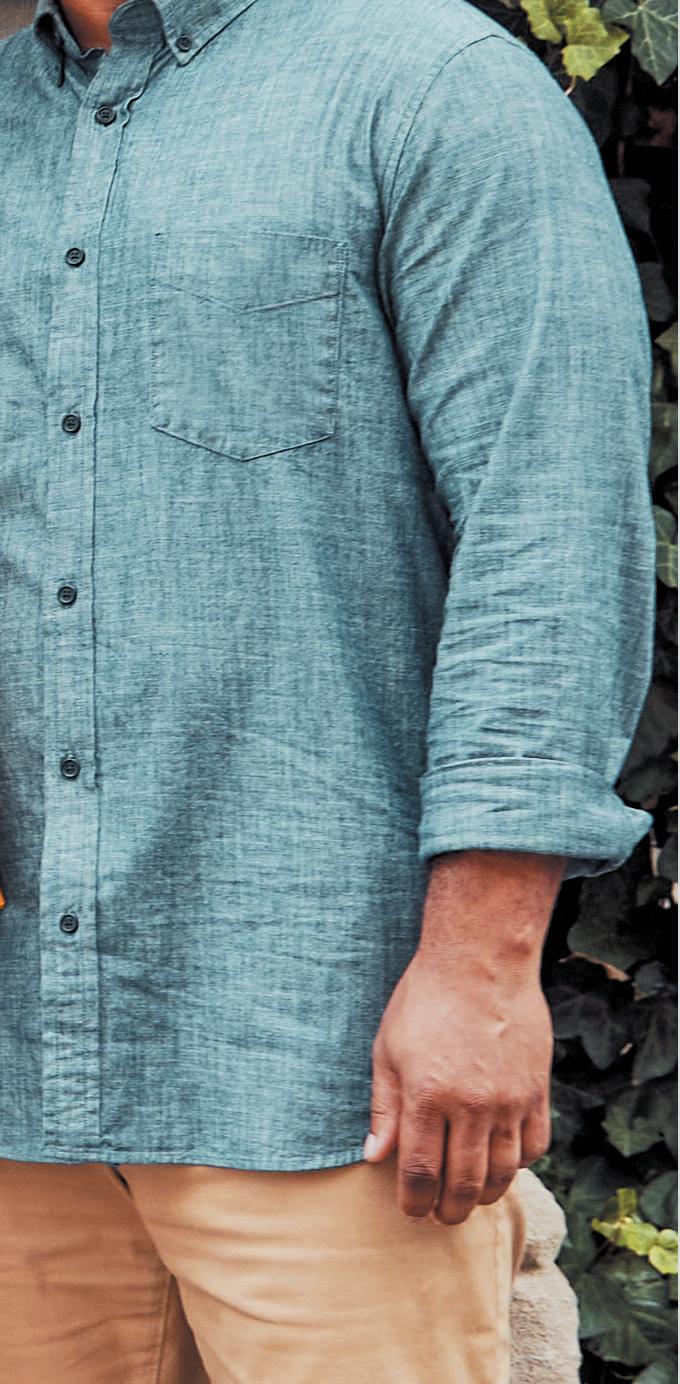









Hair Authority Spring 2023 17
Hair Care is a Growing Concern for Gen Xers
So, what is GEN X?
Generation X, or Gen X for short is the demographic cohort born between 1965 and 1980 They came after the Baby Boomers and before Millennials making them the “middle child” of generations. The Gen X generation is a unique age group with distinct characteristics. They are the first to come of age in an era of unprecedented technological advances, and they’ve adopted these advancements in their everyday lives.
Gen Xers are often characterized as independent, entrepreneurial-minded individuals who value hard work and personal responsibility. Social media has become a regular part of their daily routine, and image and clothing have become integral parts of how they present themselves to the world.
Gen Xers’ Fashion Sense
In addition to their individual style, they also have a strong sense of community when it comes to dress. They often take cues from

influencers, celebrities, and other trendsetters to find new trends and styles. This generation also values comfort and practicality in fashion. Gen Xers are less likely than older generations to splurge on high-end fashion labels, instead opting for affordable and sustainable options.

Accessorizing with Statement Pieces
In terms of accessories, this generation is often drawn to statement jewelry and sunglasses, which can be used to accessorize almost any outfit. They tend to prefer minimalistic designs with clean lines, as well as bold colors that make a statement.

Hair is an Important Part of Identity
Hair is an important part of the Gen Xers’ fashion identity. It is how they present themselves, allowing them to express their individuality and unique sense of style. This age group

18 Hair Authority Spring 2023
loves to experiment with different hairstyles and lengths.
Embracing Trends in Hair Care
They also embrace cutting-edge trends like coloring, highlighting, and balayage. Wigs and extensions are popular options for those who want to change up their look without permanently altering their hair.
The right hairstyle can make a Gen Xer look younger and more fit. Well-maintained, healthy hair is associated with youthfulness, giving them an energetic vibe. Short haircuts are popular for this age group since they add volume to the face and draw attention away from wrinkles or signs of aging. Additionally, bangs can also be used to frame the face, making it appear smaller and more youthful.
Hair Loss on the Rise for Gen Xers

the time they reach the age of 35, 40% of men and 21% of women will have experienced some degree of hair loss.

Personal Care Spending Habits of Gen Xers.
Predictably, hair protection is a growing concern for this age group as the number of Gen Xers with hair loss issues has risen drastically in recent years. This can be attributed to a combination of factors including stress, genetics, diet, and lifestyle choices. Hair loss can have a devastating effect on self-esteem, particulary for a generation that has grown up in an image-driven world. Thinning hair can cause feelings of insecurity and low self-confidence and unfortunately, most treatments are not covered by insurance and can be expensive.
On average, men and women first start to notice hair loss in their late twenties or early thirties. This can be attributed to a combination of age-related factors such as hormonal changes and increased levels of stress. Studies have shown that by
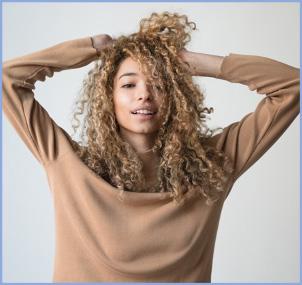
According to the Health Care Cost Institute, Gen Xers spend an average of $4,311 annually on personal care and medications—an increase of 3.2 percent from the previous year. This is higher than both Millennials and Baby Boomers, who spent an average of $3,869 and $3,583 respectively. Gen Xers are also more likely to seek out preventative care services, such as regular check-ups or vaccinations.
An open market
Overall, Gen Xers have a strong sense of identity, and they are more likely than other generations to experiment with trends and accessorize with statement pieces. Hair is an important part of their style; however, they also face the reality of hair loss due to ageing and lifestyle factors. With their increased spending on personal care, Gen Xers are ready to invest in ways to protect their hair and maintain a youthful appearance.
Hair Authority Spring 2023 19
IHA
4 AYURVEDIC HERBS FROM INDIA for Hair GROWTH

Ancient Science Making a Modern Comeback
By Prerna Khemka
The modern, fast-paced lifestyle is characterized by copious amounts of stress and inadequate nutrition. This is leading to an alarming increase in the rates of hair fall amongst young adults. In fact, the most recent statistics indicate that 8 out of 10 adults will experience some degree of hair thinning, often leading to anxiety and loss of self-confidence.
Consequently, the hair loss industry is growing by 15-20% annually, with multiple companies searching for the next best treatment. However, many of these companies completely overlook a solution that’s right in front of them, Ayurveda from Mother Earth.
Ayurveda is a 5000-year-old ancient science of healing and medicine from the Indian subcontinent. It is a

complete system of healing that practices the balancing of the mind, body, and spirit to treat ailments and achieve true health and vitality. Incorporated into this system is the sacred usage of healing herbs- and many of them have profound benefits for hair growth and overall hair health. We have all heard of Ashwagandha and its numerous health benefits for immunity, stress-relief, and hair loss. However, there are several far more beneficial Ayurvedic herbs for hair growth- that are clinically proven to treat hair loss-and are waiting to be discovered.
So, what are these secret herbs from India that can strengthen hair, promote hair growth, and treat hair loss naturally?
20 Hair Authority Spring 2023
Bhringraj
Bhringraj, also known as Kesharaj, means “ruler of the hair”. It’s no surprise then that this herb is included at the top of our list to promote healthy hair! Rich in vitamins E and D, magnesium, calcium, and iron, Bhringraj provides ample nourishment to hair follicles. Not only that, but research has also shown that the herb may be more effective than the drug minoxidil at fighting hair loss.
Neem
Studies show the plant’s ability to reduce oxidative stress, meaning it can reduce hair thinning caused by pollutants or irritants. To top it off, this magical plant has also been shown to reduce premature graying.

Containing more than 130 different biologically active compounds, this tree has many of the vital nutrients needed to protect hair follicles and promote hair growth and health. Regular topical application of neem extract has also been shown to deeply moisturize and condition the hair to reveal glossier locks.
Brahmi
This magical herb has been clinically shown to form a protective layer around your hair follicles-when used in conjunction to other Ayurvedic herbs- which is extremely important for promoting the strength and vitality of hair. But that’s not all, Brahmi is also used to reduce scalp irritation, which makes it a significant solution for conditions such as dandruff.

Amla
Amla, also known as Indian Gooseberry, is an absolute powerhouse filled with antioxidants. The copious amounts of vitamin C that it contains helps revitalize and strengthen hair from the roots all the way to the tips.


With the latest research supporting these Ayurvedic herbs’ healing powers, it’s no surprise that people are now searching for them on Amazon and trying to figure out how to use them. In response, one company, HairSmart, has undertaken to educate the US market and to make its own products available on Amazon. HairSmart combines both Ayurveda and Western Nutraceuticals and is the first South-Asian founded Ayurvedic Hair Treatment brand in the USA. HairSmart products include a Grow Serum for its ayurvedic hair growth properties, a multivitamin for a health boost and an Exotic Ayurvedic infused Hair Oil which HairSmart claims, “Will transport you to a mystical land far east!”

Hair Authority Spring 2023 21 IHA
FDA Halts Trial of Hair Loss Drug Natural Solutions Gaining Traction as Safer Alternatives

The US Food and Drug Administration (US FDA) has recently placed a partial clinical hold on a study investigating the 12 mg BID dose of deuruxolitinib, a hair loss drug developed by Sun Pharma. This decision came after a reported case of pulmonary embolism in one of their long-term Open Label Extension (OLE) studies.
Sun Pharma plans to transition patients in the OLE studies to the 8 mg BID dose arm in their ongoing research, as there have been no thrombotic events reported for this dosage. According to company officials, “The safety of our patients is our top priority, and we are working closely with the FDA to ensure a smooth transition for those who have been affected by the partial clinical hold.”
Many industry experts and people affected by hair loss are increasingly turning to natural solutions and remedies in the light of safety concerns associated with new drug trials. Dr. Jane Smith, a dermatologist with extensive experience in hair loss research, explains, “Natural solutions for hair loss, such as herbal remedies, essential oils, and scalp massages, can be just as effective and may provide long-term benefits without the associated risks that come with drug treatments.”
One product getting a lot of attention is the new all-natural
TricoMax Serum which outperformed 5% Minoxidil and Finasteride in clinical studies conducted by hair management experts, Dr. Gregory Smith, MD, MPH: Master of Public Health, Harvard University and John Satino: research principal for the two FDA-approved hair-loss drugs, as well as laser light therapy. According to clinical trials, the ingredients in TricoMax resulted in the stimulation of keratinocytes, creating hair shaft elongation as well as stimulation of the matrix cells which resulted in thickening of the hair shaft.

The increased awareness around the potential risks of new drugs and the growing trust in natural solutions are expected to impact the hair loss treatment market. With more users seeking alternative remedies, this could lead to a rise in demand for natural hair loss products, promoting a safer and more sustainable approach to hair health.

22 Hair Authority Spring 2023 IHA
Unlocking the Benefits of Oral and Topical Finasteride
Oral finasteride is a prescription medication approved by the United States Food and Drug Administration (FDA). Studies have shown that it can be an effective treatment for male pattern baldness, with a success rate as high as 90%. In addition to preventing further hair loss, finasteride may also restore growth in men who are already balding. A 5mg pill is typically taken once a day. Although it is well tolerated, side effects such as decreased libido and erectile dysfunction have been reported.
Going Generic
Oral finasteride was originally approved by the FDA in 1997 Since then, it has remained an effective and popular treatment for male pattern baldness. In fact, most hair loss professionals regard it as their first line of defense against further thinning.
spray form, but it is yet to be approved by the FDA. However, studies have suggested that it may be an effective treatment, with a success rate of up to 80%.

In comparison to oral finasteride, topical finasteride is applied directly to the scalp and has fewer potential side effects. Additionally, it may be better for targeting specific areas of hair loss. However, because the medicine isn’t absorbed fully into the bloodstream, some experts question its efficacy. Since Finasteride works by decreasing blood levels of DHT - and testosterone is actually converted to DHT in the liver - applying a spray or gel to the scalp is a less efficient mechanism compared to ingesting the medication.
Not All Finasterides Are Equal
Finasteride is available under two different brand-name drugs called Proscar and Propecia. However, Proscar and Propecia are each approved for treating different conditions. Proscar was approved for use in adult males to treat symptoms of benign prostatic hyperplasia (BPH), not hair loss.


Brands sold specifically for hair loss include keeps, hims, Happy Head Customizable Topical Finasteride & Minoxidil Solution, and XYON Customized Topical Finasteride Gel.
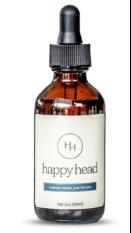
Finasteride was first marketed in the United States under the brand name Propecia, but its patent expired in 2013. This enabled other manufacturers to create their own generic finasteride products, which are generally more affordable than the original brand and just as effective. A variety of topical finasteride products are now available.
Going Topical
Topical finasteride is a recent alternative to oral finasteride for treating hair loss. It is available in liquid, gel, and

The Best of Both Worlds
Formulators are now experimenting with combination formulae offering both Finasteride and Minoxidil in one solution. The addition of minoxidil to finasteride treatment can provide substantial benefits since Finasteride works by blocking the conversion of testosterone to DHT, while minoxidil helps stimulate blood flow and encourage regrowth.
Studies have shown that patients using the combination therapy experienced faster and more significant regrowth than
Hair Authority Spring 2023 23
those using finasteride alone. But remember, you will need a prescription for these chemical solutions.


Don’t Forget Mother Nature
In previous articles Hair Authority reported on the power of certain cannabinoids to reduce inflammation and promote hair growth. In clinical trials, one all-natural cannabinoid formulation outperformed both 5mg finasteride and topical minoxidil. So, there are powerful chemical and natural solutions for thinning hair – but the important thing to remember is to start treatment early. Think “hair protection”, not “hair replacement”. Wait too long and you’re looking at “hair restoration.”

Beard Transplants Growing
Although the beard transplant market has seen rapid growth in recent years, it is subject to certain regulations that are imposed by governments across the world, specifically in Europe and North America to ensure patient safety when undergoing these procedures. One such regulation is the Cosmetics Regulation Act (CRA).
According to the latest findings released by Allied Market Research, the global Beard Transplant Market size is expected to reach USD 1.2 billion by 2031, registering a CAGR of 21.1% from 2022 to 2031. This market was valued at USD 189 million in 2021.
Beard transplants involve extracting hair follicles from one part of the body and then transplanting them to the jawline for greater facial aesthetic appeal. This trend has gained immense popularity among men with patchy beards or those looking to embrace the popular beard look, boosting demand for treatments significantly in recent years.
Growing a beard is not a simple task as men may have several issues, such as hereditary issues, scars due to accidents and burns on face, and surgical scars that not only hamper the facial aesthetics but also restrict beard growth.


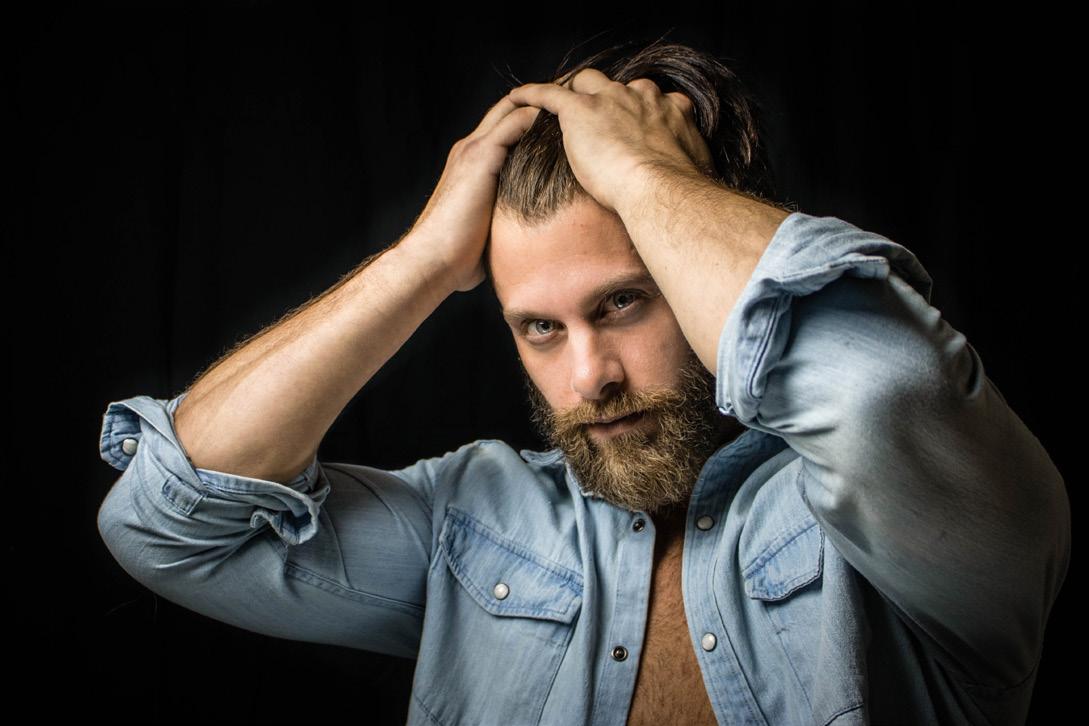
CRA seeks to protect consumers by controlling the safety and efficacy of cosmetic products, including beard transplants. The act defines a “cosmetic” as “any product intended to be applied to the human body for cleansing, beautifying, promoting attractiveness or altering the appearance.” This includes most types of facial hair transplant procedures, such as eyebrow and beard/goatee transplants.
For a procedure to be approved by the CRA it must meet specific criteria regarding the quality of materials used in production, labeling requirements, and safety assessments. All medical personnel involved in beard transplant surgeries must be certified and have adequate training to perform them safely and effectively.
The Cosmetics Regulation Act (CRA) provides essential protection for consumers who choose to undergo a beard transplant procedure. It ensures that procedures are conducted using safe materials and quality processes. By enforcing these standards, patients can rest assured that they will receive the best possible care when undergoing a procedure and the beard transplant market can continue to thrive.
24 Hair Authority Spring 2023
IHA IHA



DYNASTY MARLOWE Artfully designed full wigs made with soft, silky, 100% ethically sourced hair make any look possible. Your clients and your talents will know no boundaries. BEFORE WHEN ONLY THE BEST WILL DO EASTERN EUROPEAN REMY HUMAN HAIR COLLECTION BY AMERICAN HAIRLINES VIRTUAL CERTIFICATIONS BOOKING NOW! | HAIRUWEAR.COM/AMERICAN-HAIRLINES | 888-766-6832 ©2022 HairUWear Inc.








innovates with introduction of Superhairpieces NEW MEN’S AND WOMEN’S STOCK HAIRPIECES Superhairpieces.com | 1.866.814.7879 (Toll Free) Superhairpieces will only continue to keep introducing new innovative products and features so that our retail and salon clients only get the best quality hairpieces and have their ever-changing needs fulfilled. “Superhairpieces not only ensures that their clients receive their much-needed hairpieces on time, with quality assurance, but we also listen to our clients and continuously strive to meet their current and future needs.” Open the camera app & Scan it TARA GERHART Superhairpieces store manager
P6814BSC/P6814/P6814HP
P6818BSC/P6818/P6818HP
P7914BSC/P7918/P7918BSC










lw7914
Machine weft the rest makes the hairpiece stronger, helps reduce shedding issue. Model is wearing EUDia
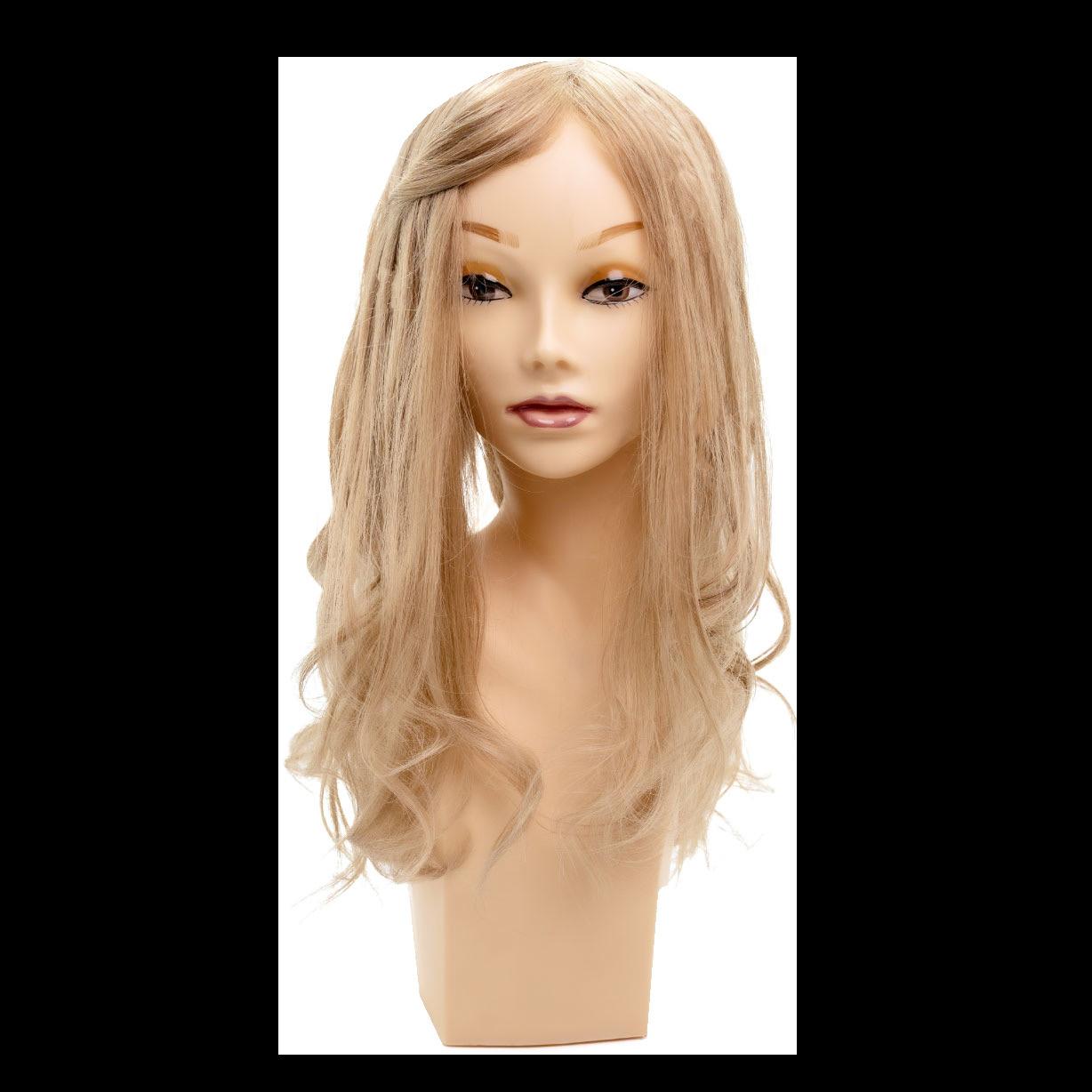



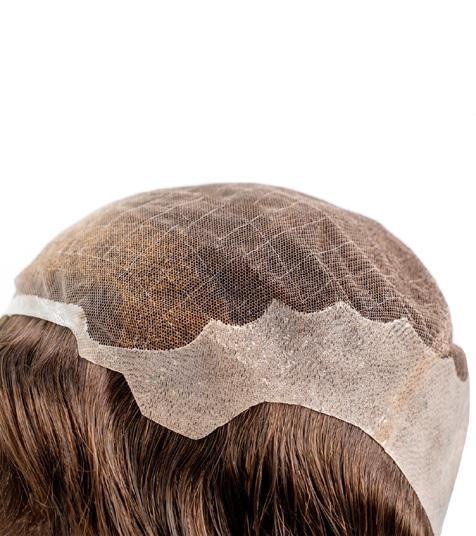


p41l
euro
HD106XL
series
sw6814 Mono topper series
new product Overview! Wide sideburns Front
PW106HD
Banking On the Future
GetHairMD™ Offers Cryogenic Hair Storage

GetHairMD™, a national provider of hair loss prevention and restoration services, has announced a partnership with Acorn Biolabs, a provider of hair follicle cell preservation services. The partnership will allow GetHairMD™ physicians to offer its patients the option to preserve their hair follicle cells for future regenerative treatments for hair and other applications.
Hair follicle cell preservation is a minimally invasive procedure that involves extracting a small number of hair follicles from the scalp. The follicles are then cryogenically frozen for future use. The stem cells derived from the preserved hair fol-
licles can be used in the future to address a number of patient issues including hair loss, skin rejuvenation, injury recovery and disease treatment.
28 Hair Authority Spring 2023
“We are excited to partner with Acorn Biolabs to offer our patients this innovative new service,” said Paul Herchman, CEO of GetHairMD. “Hair loss can be a devastating condition for both men and women, and the ability to preserve their hair follicle cells gives them a cutting-edge regenerative medicine option for future use.”
“Hair follicle cell preservation is a safe, pain-free and effective way to preserve stem cells for the future use, and we are confident that it will be a valuable addition for GetHairMD patients.” said Dr. Drew Taylor, CEO of Acorn Biolabs.


The partnership between GetHairMD™ and Acorn Biolabs is another step forward in the fight against hair loss. By offering hair follicle cell preservation, GetHairMD™ is providing its patients with the opportunity to position themselves to take advantage of future regenerative medicine options to address their hair loss.
GetHairMD™ is a network of physicians providing hair loss solutions ranging from FDA-cleared non-invasive treatments such as laser hair therapy, to nutritional supplements, prescription topicals, PRP and stress management products to minimally invasive hair grafting. Additionally, GetHairMD ™ offers a specialized pretreatment oral swab genetic test that allows practitioners to personalize hair loss treatments and banking hair follicles for future regenerative treatments with hair and other applications. GetHairMD™ is one of the first companies in the United States to offer FDA-cleared TransDermal Infusion to treat hair loss, which drives specially formulated, medical grade serum directly into the scalp.
Acorn Biolabs, founded in 2017, is a healthcare technology company with offices in Toronto and Los Angeles focused on advancing personalized regenerative medicine with autologous cell-based strategies. Acorn introduced the world’s first non-invasive, follicle-based cell preservation service in 2019, and continues to pioneer regenerative medicine applications that leverage the power of our own cells to replenish hair, rejuvenate skin, and heal our bodies.
Stay informed – Subscribe to The Hair Authority
Email: subs@hairauthority.com
Call 626-709-6397
Or cut out and return this form to the address below:
Online: Go to https://hairauthority.com/subscription-section/ =========================================================================
Please bill me for my subscription to The International Hair Authority:
Subscriber’s Name: ________________________________________
Business Name: ________________________________________________________________
Address: ______________________________________________________________
City: ___________________________ State: ________Zip: __________
Ph: ( ) _____- ______ Fax:( ) _____ - ________
30659 Lily Pond Lane Murrieta, CA 92563
Hair Authority Spring 2023 29
Get vital industry news delivered to your doorstep. Don’t miss an issue, subscribe today.
tell us how to contact you…
and
Email: ______________________________ The International Hair Authority
IHA
The Campaign for Safe Cosmetics’ (CSC) new List of Top Non-Toxic Black-Owned Beauty Brands features entrepreneurs making safer beauty products for Black women, free of the toxic ingredients linked to breast cancer and health concerns that disproportionately impact Black women. This project brings health equity to the forefront by providing a database of clean beauty products to help Black women and girls live their healthiest lives and prevent breast cancer. Released during Breast Cancer Awareness Month, the Non-Toxic Black Beauty Project focuses on specifically supporting Black women’s health because Black women face the highest breast cancer mortality rate of any racial or ethnic group in America[1].
Beauty products marketed to Black women often contain the most toxic cosmetics ingredients, including chemicals linked to cancer. In fact, Black women who regularly dye their hair have a 60% increased risk of breast cancer, and those who use chemical hair straighteners are 30% more likely to develop

Campaign For Safe Cosmetics Publishes
First-Ever List of Top Black-Owned Beauty Brands & Non-toxic Product Database

the disease[2].
By uplifting leading non-toxic Black-owned beauty brands and connecting Black women with products they can trust, CSC aims to combat toxic health disparities to help prevent breast cancer and other diseases.
The 80 small and medium sized businesses who made the list raise the bar for ingredient safety and lead the movement to address the injustice of Black beauty by selling products free of CSC’s 241 “Do Not Use” Red List Chemicals of Concern in Cosmetics. CSC vetted all 700+ products included in the first-ever searchable database for safety and verified them to be free of harmful chemicals linked to health concerns like cancer, diabetes, early puberty, endometriosis, infertility, maternal health, pregnancy complications, and uterine fibroids.
“We are thrilled to announce the launch of our searchable database of non-toxic Black beauty products” said Janet Nudelman, Director of the Campaign for Safe Cosmetics, a program of Breast Cancer Prevention Partners. “The companies we’re showcasing are making safer Black beauty products that won’t harm the health of Black women and girls. We hope that more and more companies will follow their lead and help grow the clean Black beauty industry by selling non-toxic makeup and personal care products that Black women can trust.”
“As a scientist, I’ve spent years researching and documenting the presence of toxic chemicals in hair care and other person-
30 Hair Authority Spring 2023
al care products marketed to Black women,” said Dr. Tamarra James-Todd, Associate Professor at the Harvard T.H. Chan School of Public Health. “What makes me so happy about this project, is that it has taken that science and translated it into information that can be used to avoid toxic chemicals linked to a variety of adverse health conditions that disproportionately affect black women. Having tools such as these provides an opportunity to reduce environmental health disparities through education and empowerment.”
By eliminating toxic ingredients that negatively impact Black women, these companies have made a significant commitment to protecting their customers’ health and well-being. They are also helping to reduce the disproportionate toxic burden that Black women face from unsafe chemicals in beauty and other consumer products they use, which can help prevent the development of chronic diseases like breast and ovarian cancer.
As Black women purchase and use more beauty products per capita than any other demographic, spending more than $7.5 billion dollars on beauty products a year [3] and nine times more on hair products than the average consumer [4], toxic exposure from beauty products is of particular concern.

“With the emergence of the clean beauty movement, consumers are increasingly aware of the potential that their personal care products might contain harmful, toxic chemicals,” said Dr. Adana Llanos, Associate Professor at Columbia University Mailman School of Public Health. “Black women spend substantially more money on cosmetics and hair products annually than other demographics in the U.S., and we also tend to have the worst outcomes for numerous health conditions. So, if harmful exposures from the products we are using contribute to persistent health inequities, we need resources to help promote the purchase of safer products. The Non-Toxic Black Beauty Project will be that resource for Black women and their families. Highlighting the Blackowned beauty brands offering these safer options is icing on the cake!”
The Non-Toxic Black Beauty Project is guided by an Advisory Committee made up of leading non-profit organizations and scientists working to improve Black women’s health.

“Black women carry a disproportionate amount of exposure to toxic chemicals, and all products are not created equal,” said Dr. Astrid Williams, Environmental Justice Manager for Black Women for Wellness.
“At Black Women for Wellness, we advocate for safer and cleaner products to support our efforts to style our hair safely.
Textured hair comes with its unique challenges. Choosing products that you feel confident and safe using can be difficult. The companies highlighted by this important project were vetted to ensure they are not using carcinogens and other harmful ingredients, making it easier for individuals to choose products and search for healthier options that are held to a higher standard of ingredient safety.”
Clean Beauty for Black Girls Founder and Executive Director Hannah McCall said, “Transparency is often the catalyst for long-term change and this data provides exactly that. The toxic burden facing many Black women paired with lack of awareness, access & beyond has gone on for far too long and is attached to far too many adverse health effects. This project is a pivotal piece of our pursuit of beauty justice. I’m so proud of how the Black Beauty Project sets a standard for possibility, expectations, and consumer demand. Clean Beauty for Black Girls remains committed to moving that needle forward.”
“Black women pride ourselves on crafting our crowns in every style that reflects the identity we choose to share with the world in each moment,” said Dr. Dede Teteh, Assistant Professor of Public Health at Chapman University. “The Non-Toxic Black Beauty project provides us with the knowledge and tools that help us care for our hair and other beauty assets without compromising our health. This list is a call to action for support of Black-owned businesses with our money and to elect public officials who make our interest in removing toxic products from our shelves a priority.”
“As the California Black Health Network (CBHN) works to elevate the level of health literacy for Black Californians, and the importance of the impact of exposure to toxic chemicals on their health, well-being, and safety, it is critical that we educate the community about the risks associated with products that we use every day and take for granted that they are safe,” said Rhonda Smith, Executive Director of the California Black Health Network. “Black women in particular need to know about the safety and health risks associated with our
Hair Authority Spring 2023 31
hair and personal care products to avoid those chemicals that can contribute to the development of maternal health issues, breast cancer, diabetes, etc. We are excited to collaborate and partner with BCPP on the Black Beauty Project and share this important information with our community as part of our efforts to get to the root causes of health disparities, empower the community to be more proactive about their health and wellness, and enable Black women to make better choices and more informed decisions for themselves and their families.”
President and CEO of Tigerlily Foundation Maimah Karmo said of the project, “This is such a landmark initiative and one that is much needed. We know that Black women are negatively impacted by many social determinants of health, to include toxins in the environment. I’m proud to be a part of this project that will impact the health and lives of Black women and excited to see this launch of the database of non-toxic Black-owned beauty products. Educating companies and consumers is critical to creating bi-directional awareness and accountability to ensure we eradicate environmental toxins which create barriers to health and quality of life. This is a big step in the right direction to protect the health of Black women and girls. We encourage others to support this activity and Tigerlily is committed to supporting the clean Black beauty industry to ensure non-toxic make-up and personal care products are provided to Black women and girls.”
“We are honored to partner with the Non-Toxic Black Beauty project by leveraging the Clearya data analysis platform to screen thousands of product ingredient lists for hundreds of toxic chemicals,” said Amit Rosner, Co-founder at Clearya. “Data previously analyzed by Clearya from millions of online shopping interactions reveals that chemicals linked to cancer, reproductive toxicity, developmental harm, and hormone disruption are commonly found in personal care products, which could disproportionately affect Black women and girls. The Non-Toxic Black Beauty project empowers Black women to make safer buying decisions and demonstrates to the beauty industry that setting higher safety standards can be both achievable and rewarded by consumers.”
This project represents the first comprehensive effort to generate a list of chemicals of concern in Black beauty products that should be avoided by consumers, cosmetic manufacturers, and retailers.
###
About the Non-Toxic Black Beauty Project
The Campaign for Safe Cosmetics, a program of Breast Cancer Prevention Partners, is tackling the environmental
injustice of Black beauty with a list of non-toxic beauty brands and database of products that Black women can trust. The products are made and sold by Black-owned companies that are committed to safer beauty and personal care products without the toxic chemicals linked to health concerns that disproportionately impact Black women. To be included in the next CSC List, Black-owned businesses should contact safecosmetics@bcpp.org.
About the Campaign for Safe Cosmetics
The Campaign for Safe Cosmetics (CSC) is a 501(c)(3) not-for-profit organization that leads the movement to make beauty and personal care products safer for all. safecosmetics. org
About BCPP
Breast Cancer Prevention Partners (BCPP) is a 501(c)(3) non-profit organization focused on eliminating toxic chemicals and other environmental exposures linked to breast cancer. bcpp.org
About (WVE)
Founded in 1995, Women’s Voices for the Earth (WVE) is a national environmental health organization that drives action towards a future free from the impacts of toxic chemicals alongside those historically and presently ignored by the environmental health movement by leveraging an intersectional solidarity approach based on our expertise in research, advocacy and organizing. www.womensvoices.org
[1] DeSantis, C.E., Fedewa, S.A., Goding Sauer, A., Kramer, J.L., Smith, R.A. and Jemal, A. (2016), Breast cancer statistics, 2015: Convergence of incidence rates between black and white women. CA: A Cancer Journal for Clinicians, 66: 31-42. https://doi.org/10.3322/caac.21320
[2] Eberle, C. E., Sandler, D. P., Taylor, K. W., & White, A. J. (2020). Hair dye and chemical straightener use and breast cancer risk in a large US population of black and white women. International journal of cancer, 147(2), 383–391. https:// doi.org/10.1002/ijc.32738
[3] Bryant, Taylor. “How the Beauty Industry Has Failed Black Women.” Refinery 29. February 27, 2016. Available online: https://www.refinery29.com/en-us/2016/02/103964/ black-hair-care-makeup-business. Accessed July 7, 2022.
[4] Harmon, Stephenetta. “Black Consumers Spend Nine Times More in Hair & Beauty.” Hype Hair, February 26, 2018. Available online: https://www.hypehair.com/86642/ black-consumers-continue-to-spend-nine-times-more-inbeauty-report/. Accessed July 7, 2022.
32 Hair Authority Spring 2023
IHA




Cosmetics Regulation Act
a Major Step Towards Safer Products
The Modernization of Cosmetics Regulation Act of 2022 (MOCRA) is a groundbreaking piece of federal legislation that seeks to modernize cosmetics regulation in the United States for the first time since 1938.
This landmark act, passed as part of an Omnibus Spending bill signed into law by President Biden at the end of 2022, updates and strengthens the existing regulations on cosmetic safety and labeling practices. It also includes provisions allowing for increased FDA oversight over claims made about
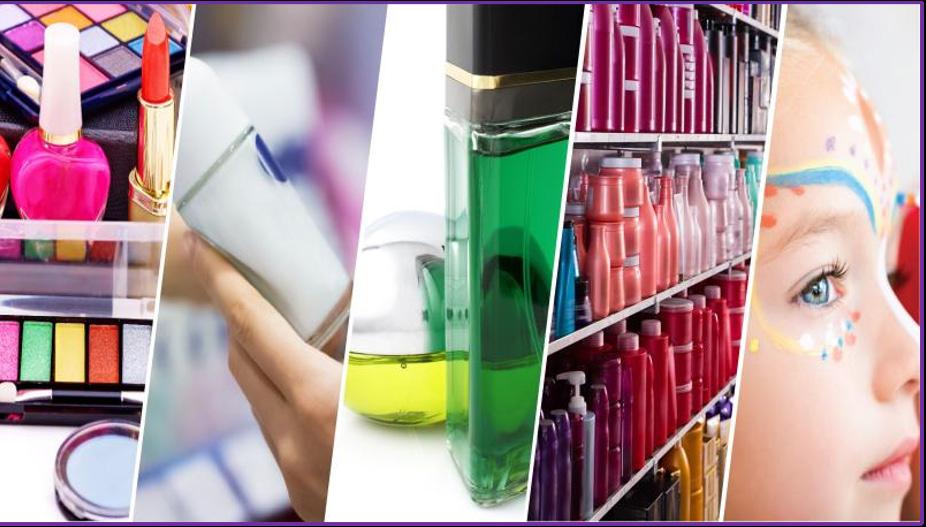
cosmetics products, as well as establishing product safety standards.

Additionally, it sets out to create transparency in the ingredients used in cosmetics products and requires companies to list all known allergens used in their formulations. MOCRA represents a major step forward in protecting consumers from potentially dangerous chemicals or substances.
MOCRA is an important law that will have

34 Hair Authority Spring 2023
a significant impact on the cosmetics industry. It sets new standards for product safety, labeling requirements, and ingredient disclosure. Under MOCRA, all manufacturers must register their cosmetic products with the FDA and list all ingredients used in production. Additionally, companies must provide detailed information about manufacturing processes, labeling instructions, warnings regarding potential allergies or other sensitivities to ingredients, and expiration dates.

This act also requires companies to report any adverse events related to their products within 15 days of receiving notice of such event. In addition, it calls for the establishment of a notification system and an adverse event reporting system, to track consumer reactions and complaints about cosmetic products.

Under MOCRA, the FDA can request records pertaining to a product’s safety substantiation and ingredients if there is reason to believe the products may be misbranded or adulterated. Furthermore, MOCRA allows the agency to request manufacturers and distributors of misbranded and/ or adulterated products conduct a mandatory recall upon notification from the FDA.
MOCRA also includes measures to ensure better quality control within production processes for cosmetics. This includes stricter guidelines for product testing, as well as improved oversight over the supply chain process. Companies must also adhere to requirements regarding labeling accuracy and disclose any potential health risks associated with their products.
This act is intended to bring the industry up to date with current regulatory standards, while ensuring consumers have access to safe and effective products. It will help create a fairer market by regulating prices, allowing smaller companies without huge marketing budgets to compete more fairly with larger brands that may be able to outspend them on marketing and advertising.
MOCRA is the first-time federal cosmetics law has been updated in over 80 years. It is a significant step forward in the regulation of cosmetics, providing consumers with more information about what they are using on their skin and hair while ensuring that companies take responsibility for producing safe products. This act will likely serve as an important benchmark for other countries looking to update their own regulations on cosmetic products.
The importance of the Modernization of Cosmetics Regulation Act of 2022 cannot be overstated. This act represents a major shift in cosmetic regulation and is an important step towards ensuring safer and more effective products for consumers worldwide. With MOCRA in place, companies can no longer hide behind outdated regulations or obscure labeling instructions. Instead, they are held accountable for producing safe products that meet consumer needs. This act will help to provide consumers with greater confidence in the products they purchase, and lead to a more equitable cosmetic market for all.
For More Information, Visit the MoCRA Webinar – The FDA has published a webinar titled Modernization of Cosmetics Regulation Act of 2022 – Key Terms and Provisions in April 2023. This stakeholder webinar provides an overview of the Modernization of Cosmetics Regulation Act of 2022. It outlines the requirements mandated by the act and the current steps FDA is taking to implement the requirements, including an update on the Voluntary Cosmetic Reporting Program, and information about an upcoming public listening session on good manufacturing practices (GMPs).

Hair Authority Spring 2023 35
IHA
New world class base design
Your clients have never experienced ANYTHING like it!
AXIOM, the latest addition to the On Rite advanced line of hair grafts.

Handcrafted utilizing reverse split knotting with light density for a natural look and a single-layer, ultra-soft woven lace base that will not fray when cut. Available in 44 natural colors including a full line of grey percentages.
Your clients turn to you for your expertise. We help keep them there.
A X I O M
Call 800-327-5555 [press9]






























 By Marta Teixeira
By Marta Teixeira


















































































































